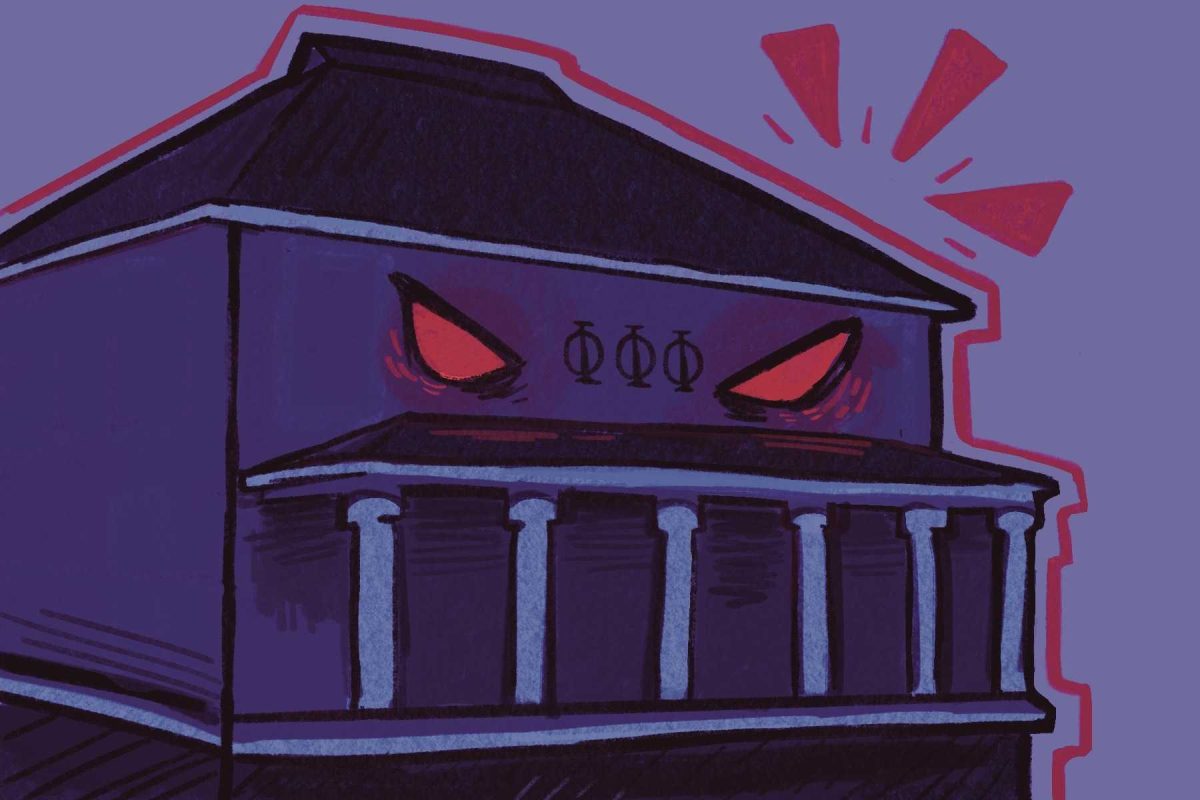On the San Marcos Texas State campus, there are numerous food options for freshman and transfer students to choose from when they arrive, located on and around campus. Two of these options are dining halls that offer buffet-style food for breakfast, lunch and dinner.
Students can utilize the on-campus dining halls between classes as a more affordable, healthier and quantitative option than the other food options from fast food chains and local restaurants.
Commons Dining Hall and Harris Dining Hall can be more affordable than Chick-fil-A, Panda Express, Starbucks or Dunkin’ Donuts. At these campus fast food locations, students are typically more money paying for one entree plus add-ons than they would if they paid for a full meal at the buffet-style dining hall.
The Chick-fil-A sandwich meal, which consists of a sandwich, waffle fries and a drink, costs $7.59, according to fastfoodprice.com. The dining hall door rate is $7.69 for breakfast, $9.69 for brunch/lunch and $9.99 for dinner, with plenty of options on the menu. In the dining halls, students do not need to limit themselves to just three items each time they dine in. To-go boxes are also an option for students to take food back to their dorm or apartment.
Students can get every course for a dollar or so more. On the Sept. 1 menu at Commons, there was a salad bar or soup for possible starters, a spiced chicken leg for the main course with sweet potato, lemon couscous or roasted corn for a side. All of that is without mentioning the plant-based food, pizza, deli sandwiches, Latin, daily grill or made-to-order grill. For dessert, there were also four bakery options.
According to the U.N. food and agriculture organization, food prices in July were 13.1% higher than last July and could continue to rise. It also makes it even more expensive to eat as a college student, as dining plans at Texas State cost $300-$2200, with freshmen having to pay at least $300 for dining dollars. With those plans, students receive meal swipes that cover $7.35 at a retail restaurant 2-7 times per week depending on the plan and $300, $400 or $500 in dining dollars which works like cash.
As opposed to the menus of the fried fast-food counterparts, the dining halls also have healthy options for students. Rather than getting a meal with fries as a side, dining halls have opportunities to fulfill every part of the food pyramid.
On the menu is vegetarian food that contains no meat, poultry, fish or seafood but may contain eggs or dairy — avoiding gluten, items made without gluten-containing ingredients — balanced U food that has balanced nutrients & portion size. And vegan, containing no animal-based ingredients or products.
These healthy menu items can also go into the sustainable dining hall eco-to-go containers. Recently, the university partnered with OZZI on the 02GO boxes to help reduce its carbon footprint. These boxes are to replace disposable ones and can be purchased for a one-time $6 fee.
The USDA recommends the average adult consumes 2,000 calories per day. According to the organization, those calories should be grains, protein, dairy, fruits and veggies, something students cannot get out of a fast-food meal.
Dining hall menus are also online, making it easy to plan when to use your meal swipes on the food you may prefer.
For Madison Green, a psychology junior, Commons Dining Hall is convenient, and the online menu makes it easy to map out her meals as she is not a fan of food served on certain days. Green said that dining halls are also not as pricey for students with a meal plan and that they offer plenty of food options.
On the weekday menu, students can find their most common breakfast items, pizza for lunch and homestyle dinner for those who prefer the basics.
“When you can get a waffle, it’s always a better day when you can get a waffle,” Green said. “Commons tries to do new, innovative food that I’m not a fan of; give me my chicken and give me my waffles.”
Knowing before you go with the online calendar menu, whether planning out your week or looking for a place to eat the day of, is an excellent tool for students to decide whether to go to the dining hall.
The dining halls have pros, but also some cons. They can accumulate long lines for popular items, causing them to run out of some food options. It can also get enough traffic to be too loud if students want to study and eat, and since it is buffet-style, it could increase the risk of encountering germs. Students may not have enough time to sit down and not want to pay for the $6 to-go box.
Regardless, the Texas State dining halls are undoubtedly a good bang for your buck, good for your health and not short on food options.
– Dillon Strine is a journalism senior
The University Star welcomes Letters to the Editor from its readers. All submissions are reviewed and considered by the Editor-in-Chief and Opinion Editor for publication. Not all letters are guaranteed for publication.
Opinion: Incoming students should take advantage of dining halls
Dillon Strine, Opinions Editor
September 9, 2022
0
Donate to The University Star
Your donation will support the student journalists of Texas State University. Your contribution will allow us to purchase equipment and cover our annual website hosting costs.
More to Discover















